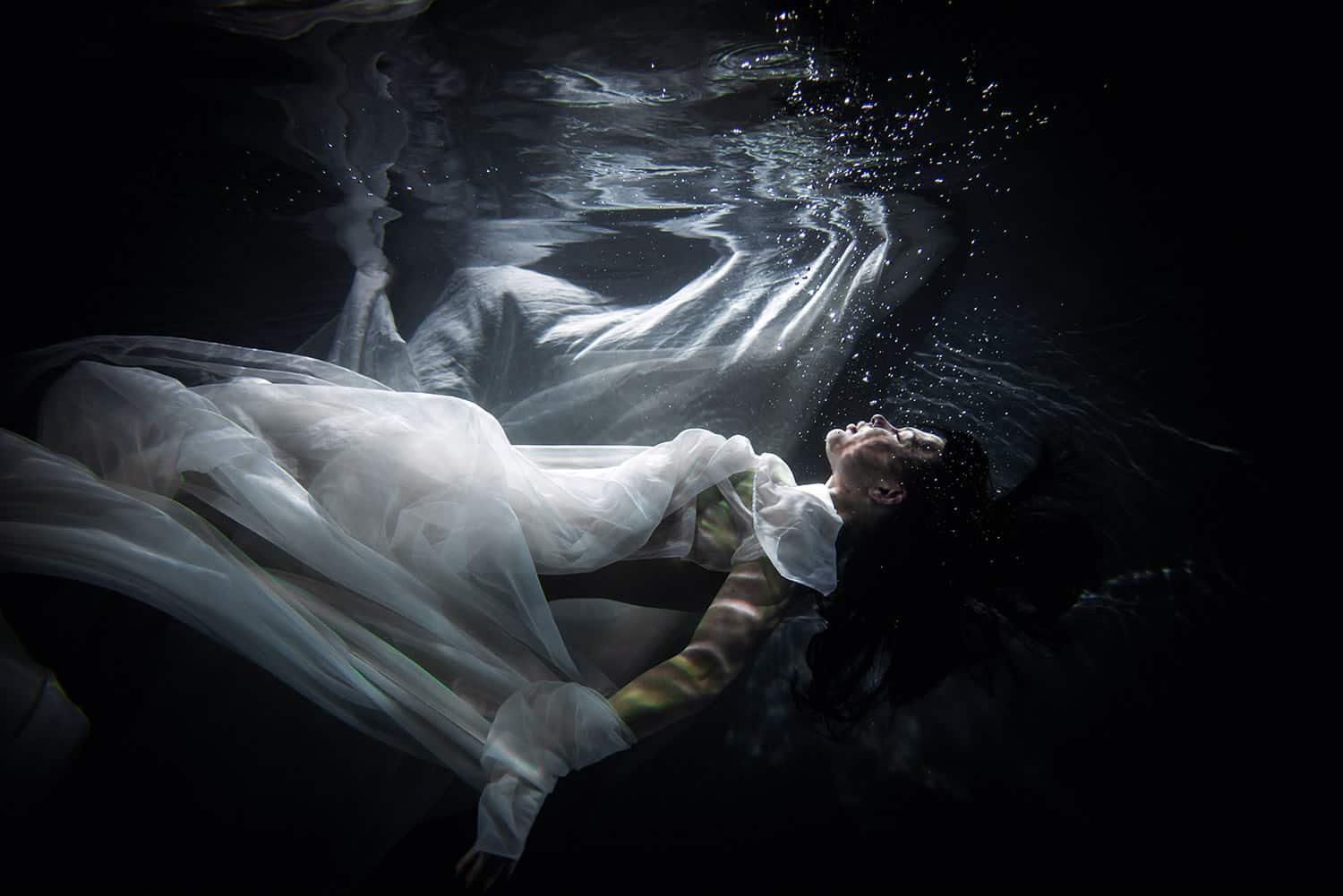Whenever I release a short story, I like to do a little behind the scenes of where the story comes from. My new Victorian era horror story, La Belle Morte Sans Merci is coming out in Midnight Echo, the magazine of the Australasian Horror Writers Association. You can order a copy here (affiliate link).
The story takes its title from the familiar Keates poem, La Belle Dame Sans Merci. The well-known poem tells the story of a faerie woman who tempts a knight to his death through her magic. There are also several exceptional and well-known paintings, the most evocative of which is by Frank Bernard Dicksee.
It’s funny, because the title came last; originally this story was called The Veil, but given its commonality as a story title, it’s not that exciting.
The story is, however, dredged in history. It follows an unnamed photographer, who grows up taking death portraits, a common practice in Victorian London to remember the dead, particularly children. This obsession with death and decay leads him into the underworld, further and further down until he encounters a mysterious woman, known only as The Veil. At a symbolic level, I wanted to write a story about the slippery slope argument, and boy, does our photographer go downhill fast.
The idea of the Veil came from reading Henry Mayhew’s The London Underworld in the Victorian Period, which was written by Mayhew and his colleagues in 1862. What’s remarkable about this book, and his other tome, London Labor and the London Poor, is that Mayhew talked to the various characters of London, from street vendors to prostitutes, and documented their stories in their own words. His books are a remarkable source of firsthand information.
The London Underworld is quite compelling reading, because it documents the hierarchies of prostitution in London, alongside ‘thieves and swindlers’, ‘beggars and cheats’. When I had been reading this as research for another novel, I was taken aback by the sheer horror of the story of one particular woman in Hyde Park.
During the day, the well-heeled traversed Hyde Park in horse buggies, showing off to society. At night, it became a haunt for prostitutes, and Mayhew documents their terrible conditions.
“Park women, properly so called, are those degraded creatures, utterly lost to all sense of shame, who wander about the paths most frequented after nightfall in the Parks, and consent to any species of humiliation for the sake of acquiring a few shillings. You may meet them in Hyde Park, between the hours of five and ten (till the gates are closed) in winter.“
Mayhew, Henry. The London Underworld In The Victorian Period – Authentic First-Person Accounts By Beggars, Thieves And Prostitutes (p. 110). Read Books Ltd.. Kindle Edition.He interviewed one woman, who ‘was in the humour to be communicative’. She “always wore a long thick veil, that concealed her features, and made her interesting to the unsuspicious and unwise.” After recounting her descent into poverty, she says,
“I was driven to a life of prostitution, not because I had a liking for it, but as a means of getting enough money to live upon. For ten years I lived first with one man then with another, until at last I was infected with a disease, of which I did not know the evil effects if neglected. The disastrous consequence of that neglect is only too apparent now. You will be disgusted, when I tell you that it attacked my face, and ruined my features to such an extent that I am hideous to look upon, and should be noticed by no one if I frequented those places where women of my class most congregate; indeed, I should be driven away with curses and execrations.“
Mayhew, Henry. The London Underworld In The Victorian Period – Authentic First-Person Accounts By Beggars, Thieves And Prostitutes (pp. 115-116). Read Books Ltd.. Kindle Edition.It’s clear to a modern reader that the woman was likely afflicted by syphilis. If you know anything about historic syphilis treatments, they were horrific and usually ineffectual.
So, like many stories, I tucked this arcane piece of history away in my notes for many years, constantly prodding at my mind until I found the means to write it. The original evocation came from a writing workshop first with Elizabeth Hand and then a longer workshop with Richard Thomas.
These historical stories mixed with my love of Victorian horror, and voila, La Belle Morte Sans Merci evolved. There’s also a dash of James Ellroy in there. I must admit, I was thinking a little of L.A. Confidential as I wrote about the lewd presses of Holyrood Street.
A final note on the degenerate photographer himself. Perhaps subconsciously I had drawn inspiration from what historian Catharine Arnold describes as Mayhew’s ‘mission statement’, written in the paragraphs after this interview.
“One only gets at the depravity of mankind by searching below the surface of society; and for certain purposes such knowledge and information are useful and beneficial to the community. Therefore the philanthropist must overcome his repugnance to the task, and draw back the veil that is thinly spread over the skeleton.“
Mayhew, Henry. The London Underworld In The Victorian Period – Authentic First-Person Accounts By Beggars, Thieves And Prostitutes (p. 120). Read Books Ltd.. Kindle Edition.Drawing back the veil is one thing. But confronting what lies beneath – that’s another.
Like the sound of that creepy, creepy stuff? Order a copy here (affiliate link).

Share your thoughts